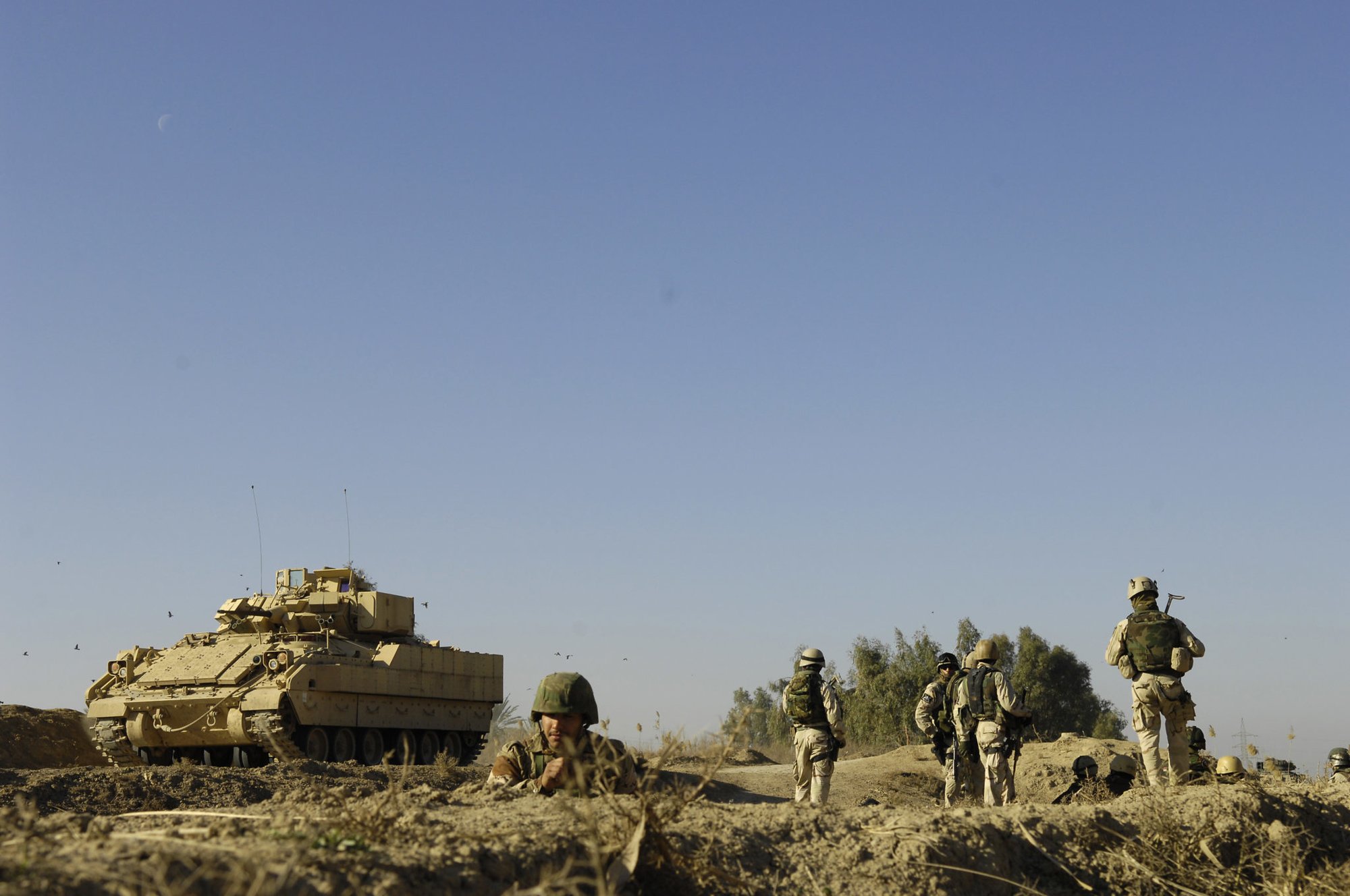
A U.S. Army M2A3 Bradley Fighting Vehicle makes its way to a footbridge used as an escape route by al-Qaeda and Ansar al-Sunna forces, while members of the Multi-Iraqi Transitional Team, 4th Battalion, 2nd Brigade, 5th Division, observe all activity in and around that location during Operation Orange Justice in Buhriz, Iraq, on Feb. 11, 2007. (U.S. Air Force photo by Staff Sgt. Stacy L. Pearsall) (Released)
U.S. Army Specialist Gregory Diacogiannis was on his second deployment to Iraq for Easter Sunday in 2007. He was stationed in South Baghdad at Camp Rustamiyah along the Tigris River as part of a dismount team on a Bradley Fighting Vehicle in the 3rd Combat Brigade Team, 3rd Infantry Division.
He was serving as a marksman, so when he was presented with the opportunity to leave his regular infantry unit for a sniper team at a different FOB a little farther up the Tigris, he took it.
For Diacogiannis, it was a normal Easter Sunday morning. But having only been in-country for a few weeks, he was still getting into the rhythm of the daily operations tempo. He got up around 6 AM, went to the gym, had chow. Since it was Easter, he and his teammates were looking forward to the big lunch and dinner that had been set up for later in the day.
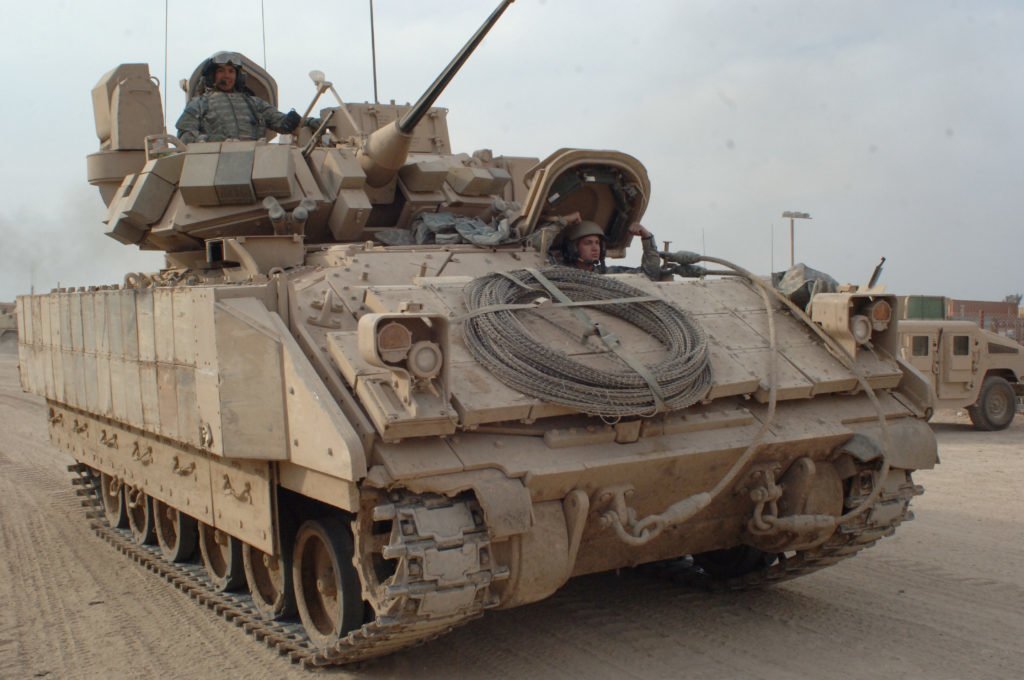
When 5 PM rolled around, that feeling of normalcy was ripped out from under him. Diacogiannis was with the rest of his sniper section when he saw his first sergeant come out of the chow hall and make eye contact with him about 100 yards away. The first sergeant approached and told Diacogiannis he needed to talk to him.
“The seriousness in his voice was terrifying. I was like, ‘Oh no, not again,’” Diacogiannis said. He had seen that look on a first sergeant before — on Valentine’s Day in 2005, Diacogiannis had lost a platoon sergeant and a couple of other teammates in an IED attack.
The first sergeant then told him what no soldier wants to hear: “Guys from your old platoon, their Bradley got hit with an IED and we lost a couple of them.”
Devastated, Diacogiannis immediately wanted to know who it was.
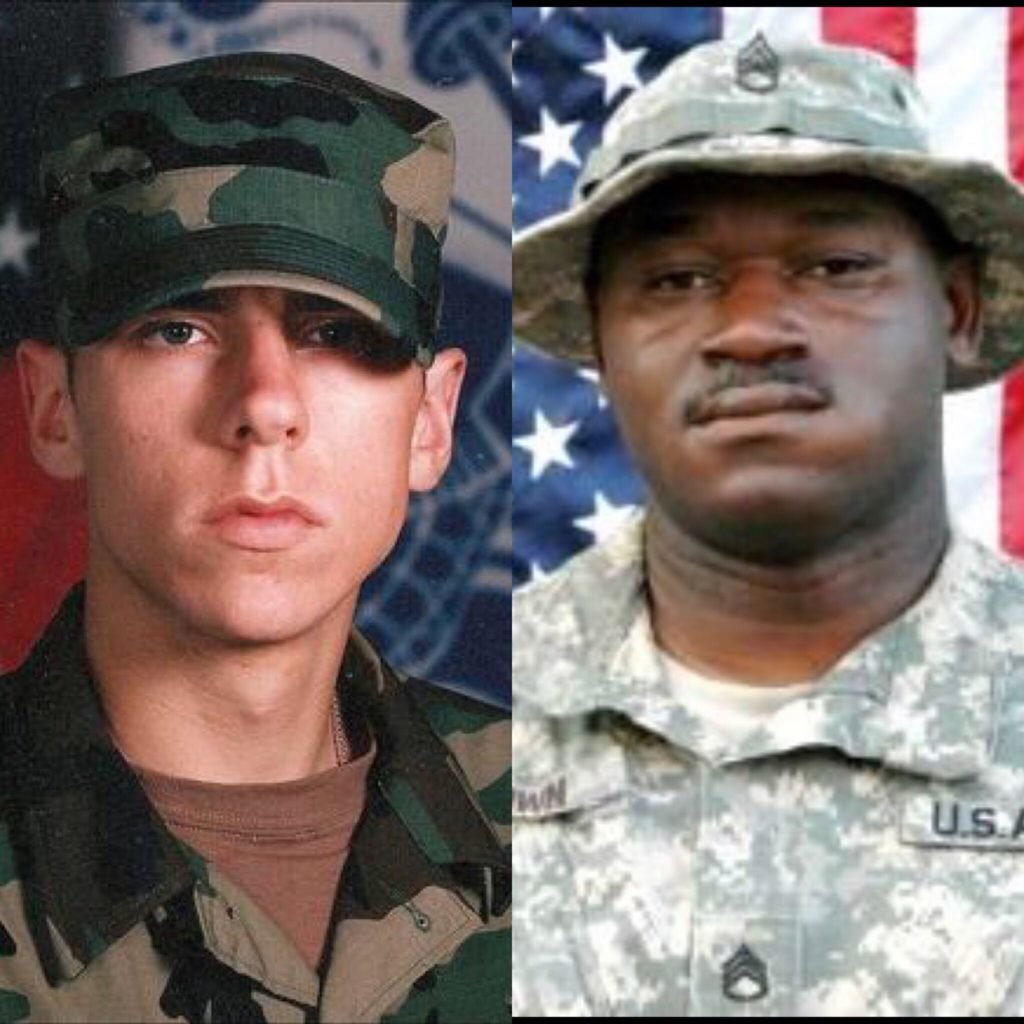
“It was [Staff] Sergeant [Harrison] Brown,” replied the first sergeant, according to Diacogiannis. If Brown was hurt, that meant it was Diacogiannis’ old Bradley that had been hit. “He didn’t make it out, and Private [First Class David] Simmons didn’t make it out, either. Private White was burned up pretty bad but they are flying him out to Germany right now,”
Diacogiannis fell to his knees and began pounding on a connex.
“It was to the point where I thought I broke my hands,” he said. “I was so mad. I didn’t eat. I went back to my room, sat on the bed, staring at the wall for hours. Knowing I could have been sitting on that Bradley.”
ALL TOO COMMON
Unfortunately, attacks on U.S. troops on Easter aren’t out of the ordinary.
In 2004, Muqtada Al Sadr, a radical Shiite leader, made a call for jihad and attacked U.S. forces. On Easter Sunday, Sadr’s Mahdi Army attacked all convoys that attempted to go into or depart from Baghdad International Airport. The U.S. Army Transportation Corps was able to come out on top, though, as tanks came in and stopped Sadr’s forces.
In another incident in May 2010, U.S. Marines in Afghanistan were attacked by an IED, which left six injured.
While Easter in the States doesn’t come with IEDs or gunfights, for those deployed, anything can happen. And while it’s often hard enough being away from family during celebratory occasions, a “normal” holiday overseas can quickly take a turn for the worse.
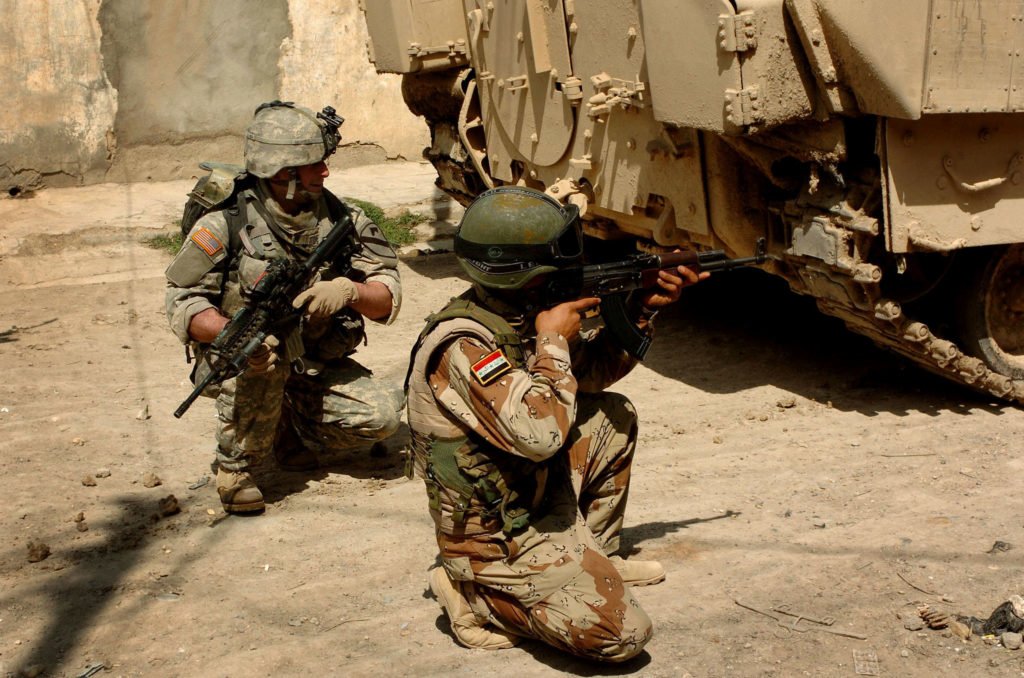
Diacogiannis later found out more details about the attack. A Bradley was being replaced on the streets of Iraq. From the time it took for them to leave and put a new Bradley on the street to switch out soldiers, a hole had been dug and filled with 1,000 pounds of explosives. Once the Bradley rolled over it, an improvised explosive device (IED) was initiated. It blew out the main cabin and most of the main turret.
Brown and Simmons were killed instantly; White climbed out on fire and survived.
One of the soldiers in Diacogiannis’ intelligence section happened to be a tattoo artist and added Brown and Simmons to an already-existing tattoo on Diacogiannis’ arm.
“It gives me an opportunity to share their story with people and make sure that their legacy is passed on,” said Diacogiannis.
Brown and Simmons were buried at Arlington National Cemetery on Sept. 13, 2007.
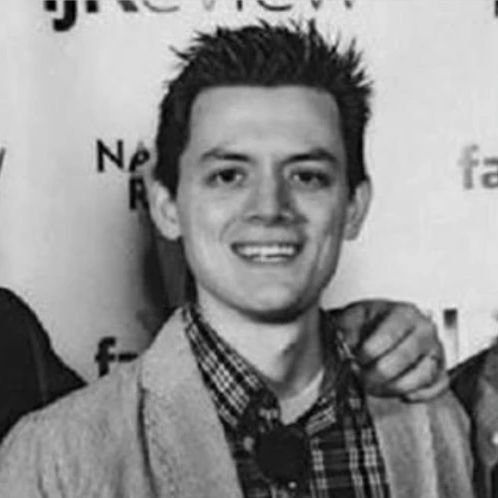
Justen Charters is a contributing editor for Coffee or Die Magazine. Justen was previously at Independent-Journal Review (IJ Review) for four years, where his articles were responsible for over 150 million page views, serving in various positions from content specialist to viral content editor. He currently resides in Utah with his wife and daughter.
BRCC and Bad Moon Print Press team up for an exclusive, limited-edition T-shirt design!
BRCC partners with Team Room Design for an exclusive T-shirt release!
Thirty Seconds Out has partnered with BRCC for an exclusive shirt design invoking the God of Winter.
Lucas O'Hara of Grizzly Forge has teamed up with BRCC for a badass, exclusive Shirt Club T-shirt design featuring his most popular knife and tiomahawk.
Coffee or Die sits down with one of the graphic designers behind Black Rifle Coffee's signature look and vibe.
Biden will award the Medal of Honor to a Vietnam War Army helicopter pilot who risked his life to save a reconnaissance team from almost certain death.
Ever wonder how much Jack Mandaville would f*ck sh*t up if he went back in time? The American Revolution didn't even see him coming.
A nearly 200-year-old West Point time capsule that at first appeared to yield little more than dust contains hidden treasure, the US Military Academy said.












